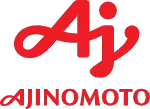Sulfanilic acid Market Size, Production, Sales, Average Product Price, Market Share, Import vs Export

- Published 2025
- No of Pages: 120+
- 20% Customization available
Robust Expansion Trajectory Characterizes the Sulfanilic Acid Market
The Sulfanilic acid Market is undergoing a phase of accelerated transformation, driven by strong tailwinds across multiple end-user industries. For instance, the global textile industry, which stood at over $1 trillion in 2023, continues to grow at a CAGR of approximately 4.6%, creating consistent demand for azo dyes. Since sulfanilic acid is a core intermediate in the production of azo dyes, the growth of the dye segment has a direct impact on the expansion of the Sulfanilic acid Market. Emerging economies such as India, Bangladesh, and Vietnam are scaling up their textile exports, pushing manufacturers to increase sulfanilic acid output to meet the rising demand.
Growth in Optical Brighteners Strengthens the Sulfanilic Acid Market
A substantial portion of the Sulfanilic acid Market growth can be attributed to the rising demand for optical brightening agents (OBAs) in the paper and packaging sectors. With global e-commerce sales exceeding $6.3 trillion in 2023, the need for superior packaging materials is increasing at a steady pace. OBAs, used to enhance the brightness and appearance of paper products, rely heavily on sulfanilic acid as a key component. Paper manufacturers across the U.S., Germany, and Japan are now investing in high-performance OBAs that conform to sustainability benchmarks, thus elevating the relevance of sulfanilic acid in these high-value applications.
Pharmaceutical Sector Drives High-Purity Sulfanilic Acid Market
The pharmaceutical sector continues to be a major catalyst for the Sulfanilic acid Market, especially with the proliferation of generic medicines and sulfa-based drug formulations. The global pharmaceutical market, valued at over $1.5 trillion, is witnessing robust growth due to rising healthcare access in developing nations. Sulfanilic acid serves as a key intermediate in the synthesis of sulfa drugs—critical for treating bacterial infections. For example, in 2022, India exported pharmaceutical products worth $25 billion, a significant portion of which involved sulfanilic acid-based intermediates. As regulatory frameworks demand higher purity standards, pharmaceutical-grade sulfanilic acid is expected to see a notable surge in demand.
Sulfanilic Acid Market Benefits from Agrochemical Applications
The expansion of the global agrochemical industry, projected to exceed $300 billion by 2030, plays a pivotal role in bolstering the Sulfanilic acid Market. Sulfanilic acid is widely used in the synthesis of herbicides and pesticides. With increasing agricultural intensification and the need to secure higher crop yields, the demand for effective crop protection chemicals is surging. For instance, the rising adoption of hybrid crops in Brazil and India has led to a higher requirement for agrochemicals that incorporate sulfanilic acid as a raw material. The market is further supported by favorable government policies promoting sustainable agriculture and the use of selective, high-performance pesticides.
Sulfanilic Acid Market Sees Surge from Food Industry Applications
Food-grade sulfanilic acid is gaining traction due to its application as a preservative and food coloring agent. The global packaged food industry, which surpassed $2.7 trillion in 2023, continues to expand, particularly in Asia-Pacific and North America. This growth fuels the Sulfanilic acid Market, as manufacturers increasingly opt for stable, non-reactive additives. Sulfanilic acid, known for its color-retention and chemical stability, is finding increased adoption in processed foods, sauces, and preserved meats. For instance, food production volumes in Southeast Asia grew by over 8% year-on-year in 2023, which directly impacts the upward momentum of sulfanilic acid consumption in the region.
Water Treatment Applications Boost Sulfanilic Acid Market Performance
Water treatment remains an evolving and critical application area that contributes to the expansion of the Sulfanilic acid Market. Sulfanilic acid is used in nitrite detection and environmental monitoring—a requirement that aligns with stringent water quality regulations across regions. For example, the U.S. Environmental Protection Agency (EPA) has set increasing benchmarks for nitrite monitoring in public water systems, driving the adoption of sulfanilic acid-based test kits. With global investments in water infrastructure expected to reach $1 trillion by 2030, especially in urbanizing economies, sulfanilic acid is positioned as a vital chemical in analytical reagents and quality monitoring tools.
Sustainability and Regulatory Push Reinforce Sulfanilic Acid Market Resilience
Sustainability trends and government-led environmental regulations are reshaping the dynamics of the Sulfanilic acid Market. For instance, under the European Union’s REACH regulation, only high-purity, environmentally safe chemicals are permitted in industrial formulations. This has prompted producers in Germany, France, and the Netherlands to adopt clean production technologies for sulfanilic acid. In turn, this shift is encouraging investments in eco-friendly sulfanilic acid production units, enhancing long-term market stability. Similarly, in the U.S., stricter emissions controls and industrial compliance norms are steering the market toward sustainable, high-purity sulfanilic acid offerings, particularly in pharmaceuticals and water treatment.
Technological Advancements Elevate Sulfanilic Acid Market Opportunities
Advanced manufacturing techniques and process innovations are introducing new growth avenues for the Sulfanilic acid Market. For example, continuous flow synthesis methods are replacing traditional batch processes to improve yield, lower emissions, and reduce production time. These innovations allow for the large-scale production of both technical-grade and pharmaceutical-grade sulfanilic acid. Manufacturers in Japan and South Korea are particularly investing in high-efficiency systems to cater to the evolving needs of the electronics, dye, and specialty chemical industries. As industries demand more consistent and high-purity intermediates, technologically superior sulfanilic acid is gaining a competitive edge in the global market.
Diversification of End-Use Industries Widens Sulfanilic Acid Market Base
The increasing adoption of sulfanilic acid across diverse sectors such as electronics, specialty chemicals, and even battery materials is broadening the scope of the Sulfanilic acid Market. For instance, research in electrochemical sensors and smart materials is exploring sulfanilic acid derivatives for advanced functionalities. While these are currently niche applications, their potential to scale is high as the global smart materials market is anticipated to cross $90 billion by 2028. The versatility of sulfanilic acid as a stable, modifiable compound positions it as a promising intermediate in next-generation material synthesis.
Asia-Pacific Emerges as the Epicenter of Sulfanilic Acid Market Growth
The Asia-Pacific region is rapidly becoming the largest contributor to global Sulfanilic acid Market expansion, driven by strong production capacities, cost advantages, and increasing domestic demand. China alone accounts for over 40% of global sulfanilic acid output, fueled by its leadership in textile exports and chemical manufacturing. India is also emerging as a high-growth market, with annual sulfanilic acid production growing at a CAGR of 7.2% from 2020 to 2024. As demand from pharmaceuticals, dyes, and agrochemicals continues to surge in the region, Asia-Pacific is expected to dominate global market share for the foreseeable future.
Western Markets Focus on High-Quality and Sustainable Sulfanilic Acid Production
In contrast to Asia-Pacific, Western markets such as the United States and the European Union are focusing on premium-grade, sustainable sulfanilic acid production. For example, the U.S. market, though smaller in volume, is characterized by high-value applications in pharmaceutical and food industries, demanding ultra-pure sulfanilic acid that adheres to FDA and EPA guidelines. Germany, known for its stringent quality control in chemical production, is investing in bio-based alternatives and cleaner synthesis methods. These shifts indicate a growing demand for value-added, compliant sulfanilic acid, which supports premium pricing and margin expansion for producers targeting Western markets.
Conclusion: Sulfanilic Acid Market on a High-Growth, High-Impact Path
With multidimensional demand growth, regulatory alignment, and technological innovation, the Sulfanilic acid Market is set to scale new heights in the coming decade. Whether through its vital role in azo dyes, pharmaceutical intermediates, or water quality monitoring, sulfanilic acid remains a critical enabler of industrial performance. The ability of manufacturers to meet rising sustainability expectations, diversify applications, and ensure supply chain resilience will determine the pace and scale of future growth in the Sulfanilic acid Market.
North America’s Focused Industrial Base Strengthens Sulfanilic Acid Market
The Sulfanilic acid Market in North America is anchored by the United States, where industrial sectors such as pharmaceuticals, water treatment, and paper manufacturing drive consistent demand. For example, the U.S. pharmaceutical industry, valued at over 500 billion dollars, consistently relies on high-purity sulfanilic acid as an essential intermediate in sulfa-based drugs. Moreover, the rising focus on nitrite detection in municipal water systems is expanding the use of sulfanilic acid in environmental monitoring. The U.S. Environmental Protection Agency’s increasing emphasis on safe water quality testing standards has led to higher procurement of sulfanilic acid-based test kits across public utilities and private labs.
In addition, the paper industry, although slightly impacted by digitization, is evolving towards high-value segments such as specialty packaging and fine-grade papers. Optical brighteners, derived from sulfanilic acid, are critical in enhancing the whiteness of these products. With over 70% of premium packaging materials requiring OBAs, sulfanilic acid consumption in this niche is witnessing a steady climb. Regional production remains modest but focused on pharmaceutical-grade and food-grade formulations, driven by stringent compliance with FDA and EPA norms. North America’s Sulfanilic acid Market is not just about volume but about value-added, high-quality chemical manufacturing.
Europe’s Regulatory Strength Spurs Sustainable Sulfanilic Acid Market Growth
The Sulfanilic acid Market in Europe is shaped by a combination of robust chemical production infrastructure and one of the world’s most comprehensive regulatory frameworks. Germany stands out as a core contributor, leveraging its leadership in dyes and pigments manufacturing. The country’s textile sector, though smaller in scale compared to Asia, is known for producing high-performance, eco-certified fabrics. These demand sustainable dye intermediates, placing sulfanilic acid in a position of strategic importance. German manufacturers are increasingly adopting cleaner synthesis routes to meet both local demand and export obligations across the EU.
France and the United Kingdom further reinforce European Sulfanilic acid Market trends through their pharmaceutical and food sectors. France’s food industry, which contributes over 20% to its total industrial output, utilizes sulfanilic acid in food colorants and preservatives. Similarly, the UK’s emphasis on premium-grade packaging has supported its paper industry’s investment in high-performance OBAs. Across Europe, REACH regulations ensure that sulfanilic acid used in industrial processes adheres to strict toxicity and sustainability benchmarks. This alignment between regulation and innovation is helping Europe evolve as a hub for premium and sustainable sulfanilic acid production.
Asia-Pacific Leads Sulfanilic Acid Market with Volume-Driven Growth
Asia-Pacific dominates the global Sulfanilic acid Market, driven primarily by large-scale production in China and India. China, accounting for more than 40% of global sulfanilic acid output, benefits from an integrated chemical manufacturing ecosystem. For instance, China’s textile exports exceeded 300 billion dollars in 2023, and with 80% of dyes used in textiles requiring sulfanilic acid-based intermediates, the correlation is both direct and substantial. Additionally, the country’s commitment to sustainable dyeing technologies is resulting in the retrofitting of traditional plants with continuous flow production methods for sulfanilic acid.
India is another powerhouse in the Sulfanilic acid Market, with strong domestic consumption across pharmaceuticals, textiles, and agrochemicals. The country’s pharmaceutical exports, growing at a CAGR of 9%, reached nearly 25 billion dollars in 2023. A significant portion of generic drugs produced in India rely on sulfanilic acid as a base intermediate. The Indian government’s focus on import substitution and chemical self-reliance, through its “Make in India” initiative, is boosting domestic sulfanilic acid production capacity. India’s agrochemical industry is also rapidly scaling, with sulfanilic acid being a critical input in herbicides aimed at improving crop productivity in states like Punjab, Gujarat, and Maharashtra.
Japan and South Korea Expand High-Purity Sulfanilic Acid Production
The Sulfanilic acid Market in Japan and South Korea is distinctively skewed toward high-purity applications. Japan’s strength in specialty chemicals and food-grade ingredients positions sulfanilic acid as a vital compound in food coloring, medical reagents, and specialty dyes. For instance, Japan’s packaged food sector, valued at over 200 billion dollars, emphasizes safety and shelf-life—two factors that support sulfanilic acid usage in food additives.
South Korea, with a technologically advanced pharmaceutical and textile base, is scaling up sulfanilic acid consumption through its precision-driven manufacturing units. Korean textile manufacturers, supplying to major global fashion brands, demand superior-quality azo dyes that depend on sulfanilic acid. Similarly, sulfanilic acid is used in South Korea’s rapidly growing environmental monitoring segment, which includes advanced water purification and nitrite detection systems. The precision-oriented chemical industry in both these nations supports innovation-driven expansion of the Sulfanilic acid Market.
Southeast Asia and Oceania Witness Structural Demand Shift in Sulfanilic Acid Market
In Southeast Asia, countries like Vietnam, Thailand, and Indonesia are emerging as promising centers of sulfanilic acid demand. For instance, Vietnam’s textile and apparel exports have risen by 15% annually over the past five years, driving parallel demand for dye intermediates like sulfanilic acid. Thailand and Indonesia are also expanding their paper and agrochemical industries, sectors that utilize sulfanilic acid in OBAs and pesticide formulations, respectively.
Australia contributes a smaller but vital share to the Sulfanilic acid Market, focusing primarily on pharmaceutical-grade and water-treatment applications. The country’s rigorous chemical standards and growing environmental awareness have led to increased sulfanilic acid usage in nitrite testing and eco-safe food additives. Collectively, the Southeast Asia and Oceania regions are moving towards self-reliance in intermediate chemicals, which includes investing in sulfanilic acid production capacities to reduce dependence on imports.
Latin America Strengthens Domestic Production in Sulfanilic Acid Market
Latin America’s Sulfanilic acid Market is being reinforced by local production capabilities and rising domestic demand. Brazil, with its large agrochemical and food processing sectors, is emerging as a regional hub. The country’s soybean and sugarcane farming operations are increasingly dependent on herbicides formulated with sulfanilic acid, especially in high-yield zones of Mato Grosso and Paraná. Additionally, Brazil’s packaged food exports, targeting Europe and the U.S., are leading to a spike in demand for sulfanilic acid as a food-grade additive.
Mexico, with its growing pharmaceutical industry and NAFTA-aligned trade networks, is also witnessing greater sulfanilic acid usage. Several local manufacturers are now investing in backward integration to produce intermediates like sulfanilic acid domestically, thereby reducing costs and improving quality assurance for drug manufacturing. The Latin American Sulfanilic acid Market is poised for sustained growth as industrial modernization, regional supply chain development, and government incentives align in favor of localized production.
Middle East and Africa Offer Untapped Potential in Sulfanilic Acid Market
While currently a smaller player, the Middle East and Africa (MEA) region presents long-term growth opportunities for the Sulfanilic acid Market. Countries like the United Arab Emirates and South Africa are emerging as chemical distribution and manufacturing hubs. For instance, Dubai’s strategic location and advanced port infrastructure allow it to serve as a key re-export center for sulfanilic acid products into Africa.
Africa’s growing need for water quality monitoring, due to expanding urban populations and industrialization, is contributing to demand for sulfanilic acid in nitrite testing. Moreover, agricultural economies in East Africa and Southern Africa are beginning to adopt modern herbicide formulations that include sulfanilic acid. As investments in industrialization and infrastructure continue to rise, MEA is expected to shift from an import-driven model to a more self-sustained Sulfanilic acid Market.
Sulfanilic Acid Market Segmentation by Product Grade Reflects Diverse Industrial Needs
The Sulfanilic acid Market is segmented into three major grades—technical, food, and pharmaceutical—each catering to unique end-user demands. Technical-grade sulfanilic acid dominates in terms of volume and is widely used in the manufacture of dyes and OBAs. For instance, over 65% of textile dye formulations globally utilize this grade, particularly in cost-sensitive markets like Bangladesh, Pakistan, and Southeast Asia.
Food-grade sulfanilic acid, although smaller in volume, commands a premium due to regulatory and safety requirements. It is used in food coloring and preservatives, especially in processed food products. The shift toward healthier, longer-lasting packaged foods is increasing demand in North America and Europe, where food safety regulations are among the strictest in the world.
Pharmaceutical-grade sulfanilic acid is witnessing rapid growth, especially in India, the U.S., and South Korea, where high-purity drug intermediates are essential. This grade must meet exacting standards in terms of solubility, impurity levels, and reactivity. As global demand for antibiotics and generics continues to grow, pharmaceutical-grade sulfanilic acid is emerging as the most profitable segment in the market.
Application-Based Segmentation Drives Demand Diversification in Sulfanilic Acid Market
By application, the Sulfanilic acid Market is segmented into dyes and pigments, paper brighteners, pharmaceuticals, agrochemicals, food additives, and water treatment. Dyes and pigments remain the dominant category, fueled by the global demand for textiles and fashion products. Meanwhile, the paper segment is growing steadily due to premium packaging needs in e-commerce and FMCG sectors.
Pharmaceutical applications are expanding, especially in emerging markets where access to affordable medications is a priority. Agrochemical applications are gaining ground in Latin America and Asia, where crop yields are critical for food security. Water treatment applications, while niche, are gaining relevance due to rising environmental concerns and regulatory oversight.
Each of these segments is experiencing unique growth trajectories, offering stakeholders multiple pathways to capitalize on evolving demand dynamics in the global Sulfanilic acid Market. As segmentation becomes more refined and application-specific, producers are expected to innovate with tailored formulations and purity levels, unlocking new revenue streams and competitive advantages.
Major Manufacturers Driving Growth in the Sulfanilic Acid Market
The Sulfanilic acid Market is shaped by a concentrated pool of global manufacturers that dominate both volume-driven and high-purity production segments. These companies serve a diverse array of end-use sectors, including dyes, pharmaceuticals, agrochemicals, and water treatment. Market leaders are continuously innovating with product lines tailored for specific applications and geographies, while also aligning production with regulatory and sustainability standards.
Kiri Industries Ltd. (India)
Kiri Industries Ltd. is one of the leading producers in the Sulfanilic acid Market, primarily serving the global dye and pigment industry. The company operates several integrated manufacturing facilities in Gujarat, India, where it produces intermediates for azo dyes, including sulfanilic acid. Its sulfanilic acid is marketed under its broader portfolio of dye intermediates and is supplied to both domestic and international textile and paper industries. Kiri Industries emphasizes backward integration, ensuring raw material availability and quality control. Its sulfanilic acid output is widely used in the synthesis of reactive dyes exported to Europe, China, and Latin America.
Valaji Pharma Chem (India)
Valaji Pharma Chem is a key Indian player in the Sulfanilic acid Market, offering technical, food, and pharmaceutical-grade sulfanilic acid. The company has gained reputation for its pharma-grade sulfanilic acid, used in sulfa-based drug production. It focuses on high-purity formulations suitable for pharmaceutical manufacturers in India and abroad. Valaji’s consistent adherence to GMP and ISO standards has positioned it as a preferred supplier among formulation companies in the Middle East and Southeast Asia.
Huayuan Group (China)
As one of China’s dominant chemical manufacturers, Huayuan Group maintains a strong presence in the Sulfanilic acid Market with large-scale production capabilities. The company’s sulfanilic acid is primarily used in OBAs and dyes, with an annual capacity exceeding several thousand metric tons. Huayuan offers a product line including technical-grade sulfanilic acid tailored for textile and paper industries. It also produces downstream products like OBAs, making it a vertically integrated supplier for clients across China, Southeast Asia, and Eastern Europe. Huayuan continues to invest in green chemistry technologies, aiming to reduce its carbon footprint during sulfanilic acid synthesis.
Hangzhou Meite Chemical Co., Ltd. (China)
Hangzhou Meite Chemical is a specialized manufacturer focusing on aromatic sulfonic acids and intermediates, including sulfanilic acid. The company’s sulfanilic acid products are marketed under its “MeiteChem” brand, with purity levels exceeding 99% for pharma-grade applications. Hangzhou Meite exports primarily to Europe and the Americas, serving clients in pharmaceuticals and fine chemicals. Its strength lies in its advanced purification techniques and quality consistency across batches, which are essential for regulated industries.
Venus Dye Chem (India)
Venus Dye Chem is another notable contributor to the Sulfanilic acid Market, catering mostly to dye manufacturers and the paper industry. The company offers technical-grade sulfanilic acid as part of its broader product range of sulfonated intermediates. With facilities based in Maharashtra, India, Venus Dye Chem is focused on competitive pricing and reliable supply, targeting both domestic demand and exports to African and Middle Eastern markets. It is increasingly investing in capacity enhancement and raw material traceability, particularly to meet rising compliance requirements.
TCI Chemicals (Japan/Global)
TCI Chemicals operates globally and supplies laboratory-grade sulfanilic acid for research and pharmaceutical applications. While not a bulk producer, TCI is recognized in the Sulfanilic acid Market for its high-purity, small-batch capabilities. Its sulfanilic acid is used in analytical reagents, nitrite detection, and advanced pharmaceutical R&D. The company’s global distribution network ensures access to precision-grade chemicals for universities, research labs, and specialty pharma companies in North America, Europe, and Asia-Pacific.
Gyan Chemical Industries (India)
Gyan Chemical Industries focuses on bulk manufacturing of sulfanilic acid, primarily for dyes and OBAs. The company is known for its technical-grade production at scale, which caters to textile hubs across India, Bangladesh, and Sri Lanka. Gyan Chemical’s product line is widely accepted among textile dye producers and has recently expanded to include environmentally friendly sulfanilic acid derivatives. Its logistics network is optimized for both inland and coastal supply, providing a competitive edge in regional distribution.
Zhejiang Longyou GD Chemical Co., Ltd. (China)
Zhejiang Longyou GD Chemical is a high-volume supplier in the Sulfanilic acid Market, primarily producing technical-grade sulfanilic acid for the dye and pigment sectors. With annual output capacity of over 10,000 tons, the company is a key exporter to Asia, South America, and Africa. It also manufactures derivative products used in OBAs, enabling one-stop procurement solutions for large manufacturers. Zhejiang Longyou is actively upgrading its facilities to meet international environmental certifications and improve energy efficiency in its production lines.
Sadhana Nitro Chem Ltd. (India)
Sadhana Nitro Chem, though primarily focused on nitro aromatic compounds, is involved in the backward integration of sulfanilic acid production. The company’s strategy is to increase control over intermediates used in dye and pharmaceutical synthesis. By securing consistent sulfanilic acid output, it supports both internal production and third-party demand. Sadhana’s R&D division is exploring novel applications of sulfanilic acid in electrochemical and polymer sectors, potentially opening new demand streams in the years ahead.
Recent Developments and Industry News in the Sulfanilic Acid Market
In recent months, the Sulfanilic acid Market has witnessed several noteworthy developments pointing toward capacity expansion, regulatory shifts, and collaborative research.
- January 2024: Kiri Industries announced a 15% increase in its sulfanilic acid production capacity in India, citing increased orders from European textile dye manufacturers adapting to REACH regulations. This move is aimed at capturing premium demand from environmentally compliant clients.
- March 2024: Huayuan Group in China introduced a new low-emission sulfanilic acid production unit, reducing greenhouse gas emissions by 18% compared to conventional methods. The company aims to transition 50% of its total output to green production by 2026.
- February 2024: Gyan Chemical Industries signed a long-term supply agreement with a major Southeast Asian OBA producer to ensure consistent delivery of sulfanilic acid for expanding packaging material applications.
- April 2024 (Scheduled): Sadhana Nitro Chem is set to unveil its new R&D lab dedicated to sulfanilic acid-based specialty intermediates, focusing on electronic materials and photostable compounds.
- Q1 2024: Global shipping disruptions have prompted several manufacturers in India and China to restructure their export strategies, with emphasis on building regional inventory hubs in Europe and Latin America to mitigate lead time risks.
These developments signal a shift in the Sulfanilic acid Market toward high-value, sustainable, and application-specific production models. Manufacturers are increasingly aligning operations with global standards, while also exploring new application domains that promise higher margins and long-term demand stability.
Market Scenario, Demand vs Supply, Average Product Price, Import vs Export, till 2035
- Global Sulfanilic acid Market revenue and demand by region
- Global Sulfanilic acid Market production and sales volume
- United States Sulfanilic acid Market revenue size and demand by country
- Europe Sulfanilic acid Market revenue size and demand by country
- Asia Pacific Sulfanilic acid Market revenue size and demand by country
- Middle East & Africa Sulfanilic acid Market revenue size and demand by country
- Latin America Sulfanilic acid Market revenue size and demand by
- Import-export scenario – United States, Europe, APAC, Latin America, Middle East & Africa
- Average product price – United States, Europe, APAC, Latin America, Middle East & Africa
- Market player analysis, competitive scenario, market share analysis
- Business opportunity analysis
Key questions answered in the Global Sulfanilic acid Market Analysis Report:
- What is the market size for Sulfanilic acid in United States, Europe, APAC, Middle East & Africa, Latin America?
- What is the yearly sales volume of Sulfanilic acid and how is the demand rising?
- Who are the top market players by market share, in each product segment?
- Which is the fastest growing business/ product segment?
- What should be the business strategies and Go to Market strategies?
The report covers Sulfanilic acid Market revenue, Production, Sales volume, by regions, (further split into countries):
- Asia Pacific (China, Japan, South Korea, India, Indonesia, Vietnam, Rest of APAC)
- Europe (UK, Germany, France, Italy, Spain, Benelux, Poland, Rest of Europe)
- North America (United States, Canada, Mexico)
- Latin America (Brazil, Argentina, Rest of Latin America)
- Middle East & Africa
Table of Contents:
- Introduction to the Sulfanilic Acid Market
- Definition and Chemical Properties of Sulfanilic Acid
- Industrial Applications and Market Scope
- Importance of Sulfanilic Acid in Various Industries
- Market Segmentation of Sulfanilic Acid
- By Product Type:
- Technical Grade Sulfanilic Acid
- Food Grade Sulfanilic Acid
- Pure Grade Sulfanilic Acid
- By Application:
- Dyes & Pigments
- Food & Beverage Industry
- Pharmaceutical Industry
- Paper & Pulp Industry
- By Region
- Global Market Overview and Growth Trends (2019-2035)
- Sulfanilic Acid Market Size and Revenue Analysis
- Key Growth Drivers and Market Challenges
- Emerging Opportunities in Sulfanilic Acid Production
- Regional Analysis of Sulfanilic Acid Market
- North America: Market Performance, Key Suppliers, Trade Data
- Europe: Demand Trends, Pricing Analysis, Regulatory Impact
- Asia Pacific: Leading Producers, Consumption Trends, Export-Import Analysis
- Latin America: Market Expansion, Industry Investments, Demand Forecast
- Middle East & Africa: Competitive Landscape, Market Entry Opportunities
- Sulfanilic Acid Production and Supply Chain Analysis
- Global Sulfanilic Acid Production Volume and Forecasts (2019-2035)
- Leading Sulfanilic Acid Manufacturers and Their Production Capacities
- Advancements in Sulfanilic Acid Production Technology
- Competitive Landscape in the Sulfanilic Acid Industry
- Major Market Players and Their Market Share
- Company Profiles, Strategic Collaborations, and Mergers
- Innovation Strategies and R&D Investments
- Market Share and Revenue Insights by Key Sulfanilic Acid Manufacturers
- Revenue Distribution of Leading Producers (2019-2025)
- Competitive Market Positioning and Business Strategies
- Sulfanilic Acid Pricing and Cost Analysis
- Regional Price Trends and Market Fluctuations
- Breakdown of Sulfanilic Acid Manufacturing Costs
- Raw Material Costs and Supplier Analysis
- Trade and Supply Chain Analysis for Sulfanilic Acid
- Domestic vs International Sulfanilic Acid Supply Trends
- Export-Import Data and Market Trade Patterns
- Supply Chain Logistics and Distribution Challenges
- Consumption and Demand Forecast for Sulfanilic Acid
- Global and Regional Consumption Trends
- Demand Growth by Industry and Application
- Future Demand Outlook (2025-2035)
- Industrial and Manufacturing Process of Sulfanilic Acid
- Chemical Synthesis and Processing Techniques
- Key Raw Materials and Feedstock Supply Chain
- Sustainability Practices in Sulfanilic Acid Production
- Marketing and Distribution Strategies for Sulfanilic Acid
- Distribution Networks and Key Suppliers
- Leading Distributors and Resellers in the Market
- Consumer Demand and Industry Adoption Trends
- Technological Advancements and Innovations in Sulfanilic Acid Production
- Emerging Production Techniques for Improved Efficiency
- Sustainability Trends and Green Manufacturing Initiatives
- Quality Control and Product Development Innovations
- Investment and Business Opportunities in the Sulfanilic Acid Market
- High-Growth Regions for Investment
- Expansion Strategies for Manufacturers
- Market Entry Barriers and Risks
- Future Market Trends and Industry Forecast (2025-2035)
- Predicted Market Growth and Evolving Industry Dynamics
- Changing Consumer Preferences and End-User Industries
- Impact of Regulatory Policies on Sulfanilic Acid Production
- Conclusion and Strategic Recommendations
- Summary of Key Findings from Market Research
- Business Strategies for Industry Growth and Expansion
- Future Roadmap for Sulfanilic Acid Market Players
Other recently published reports:
“Every Organization is different and so are their requirements”- Datavagyanik
Companies We Work With






Do You Want To Boost Your Business?
drop us a line and keep in touch


